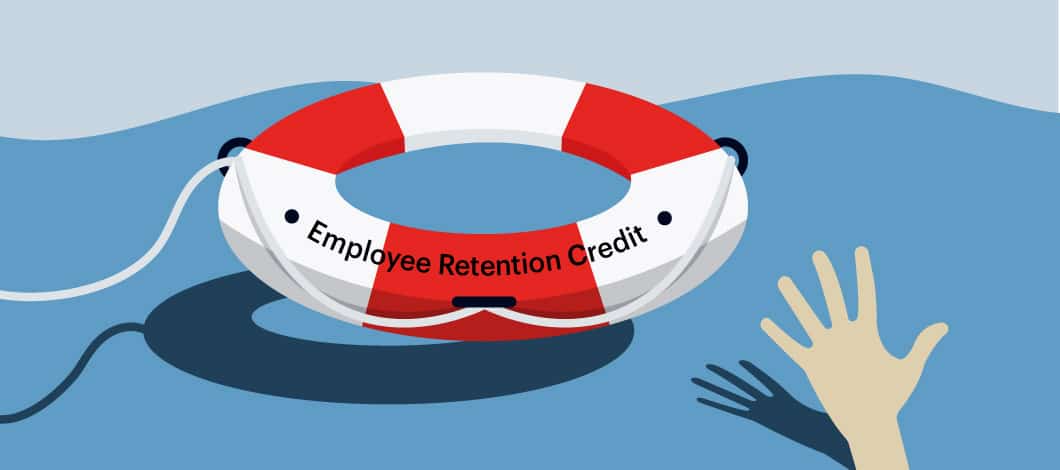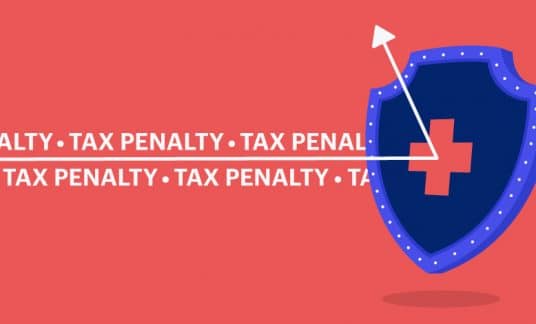The purpose of the Employee Retention Credit (ERC) is to encourage business owners to keep their employees on the payroll during the COVID-19 pandemic and reduce the number of people applying for unemployment benefits.
Let’s look at the employee retention credits program and see how it benefits businesses.
What Is Employee Retention Credit?
The Coronavirus Aid, Relief and Economic Security Act (CARES) of 2020 created the employee retention tax credit (ERTC) for employers to reduce the amount of payroll taxes that employers must pay to the federal government and make available cash that could be used to pay employees. It is effective for the period from March 13, 2020, through Dec. 31, 2020.
The CARES Act specified the conditions under which an employer would qualify for the employee retention tax credit 2020. Afterward, the Consolidated Appropriations Act passed in December 2020, relaxed the eligibility requirements considerably for the first two quarters of 2021.
Who Is Eligible For the Employee Retention Tax Credit in 2020?
For a business to be eligible for the ERTC in 2020, it must meet one of the following requirements:
- Gross receipts for at least one quarter in 2020 must be less than 50% of the gross receipts for the same quarter in 2019. A “significant decline in gross receipts” begins “on the first day of the first calendar quarter of 2020 for which an employer’s gross receipts are less than 50% of its gross receipts for the same calendar quarter in 2019,” according to the IRS. The agency adds that the significant decline in gross receipts ends on the first day of the first calendar quarter following the calendar quarter in which gross receipts are more than 80% of its gross receipts for the same calendar quarter in 2019.
- The business’s operations must be either fully or partially suspended by a government order for any calendar quarter of 2020.
If the business met the 50% decline in gross receipts requirement, the next question depends on the number of employees. If the business had less than 100 full-time employees in 2019, all wages paid to employees, whether working or not, would be eligible as qualifying wages for the ERC. For a business with more than 100 employees, only those wages paid to employees who weren’t working would be eligible as qualifying wages.
A business would remain eligible for the ERC as long as gross receipts for the following quarter don’t go above 80% of a comfortable quarter in 2019.
Now suppose a business met the requirement that its operations were adversely affected by a government order, thereby making it eligible for the ERC. In this case, the number of employees that a business has wouldn’t make any difference. All wages paid to employees, both working and not working, would be eligible as qualifying wages.
For the purposes of determining eligibility for the ERC, qualifying wages are defined as wages and compensation paid to employees that are subject to Federal Insurance Contributions Act taxes, in addition to qualified health plan expenses. Sick leave doesn’t count as qualified wages. This leaves open the possibility of taking credit for qualified sick leave.
ERC guidelines define full-time employees as anyone who works more than 30 hours per week. Part-time employees aren’t counted in the calculation for the 100-employee threshold.

Who Is Eligible For the ERC in 2021?
Eligibility for the ERC in the first two quarters of 2021 requires that a business meet one of the following requirements:
Gross receipts for either quarter must be less than 80% of the gross receipts for the same quarter in 2019. In other words, gross receipts only need to decline by 20%, rather than the 50% decline required for eligibility in 2020.
Was the business’s operations partially or fully suspended by a government mandate during any calendar quarter of 2021?
If a business meets the 20% decline in gross receipts requirement, the number of employees affects the wages that can be classified as qualifying wages. For businesses with more than 500 employees in 2019, only wages paid to those employees who weren’t working would be eligible as qualifying wages. However, for businesses with less than 500 employees, all wages paid to employees, whether working or not, would be counted as qualifying wages for the ERC.
This is an increase from the 100-employee threshold required to meet 2020 ERC eligibility.
For businesses that don’t meet the 20% decline in gross revenues requirement, the 500-employee threshold comes again into play if a company’s operations are adversely affected by government orders. In this case, it doesn’t matter if the company has more or less than 500 employees. Wages paid to employees, working or not, are now eligible as qualifying wages for the ERC.
Note that funds obtained from the Paycheck Protection Program (PPP) and used to pay wages wouldn’t count as qualifying wages for the purposes of determining eligibility for the ERC in either 2020 or 2021. In addition, businesses that obtained PPP loans in 2020 aren’t eligible for the ERC, but the Consolidated Appropriations Act changed that requirement for 2021. Businesses that received PPP loans are now eligible for the ERC for at least the first two quarters of 2021.
The ERC isn’t a loan and beneficiaries will never have to repay or seek forgiveness.
What Is the Amount of the Tax Credit?
Every business that has employees must file the quarterly IRS Form 941 reporting the amount of wages and the FICA taxes and deductions.
For 2020, you can claim a tax credit of up to 50% of qualified wages paid to an employee up to $10,000 annually for each employee. Therefore, the maximum credit is $5,000 per employee per year.
For 2021, you can take a tax credit up to 70% of $10,000, or $7,000, per employee per quarter. In 2020, this limitation was based on any employee wages of $10,000 annually. Now the limitation is $10,000 per quarter, or $40,000 annually, if the ERC is extended past June 2021.
The employee retention credit reduces the amount of tax you have to pay to the IRS. The credit is only applied against the employer portion of the Social Security tax, or 6.2% of wages. The credit doesn’t apply to employee income withholding taxes, the employer or employee portion of the Medicare tax or the employee contribution for the Social Security tax.
If your tax credit exceeds the amount of tax you owe, you can request a check for the difference by filing Form 7200 with the IRS.
You can’t count any wages that were paid with borrowed PPP funds as qualifying wages.

How Is the Tax Credit Received?
The tax credit is deducted from your quarterly payroll tax bill on IRS Form 941. The ERC is applied to reduce the required deposits of total payroll taxes for the quarter that the employer has withheld from each employee’s wages.
As a result, the employer is able to keep the payroll taxes deducted from employee payroll checks up to the amount of the ERC for that quarter instead of depositing these funds with the IRS. This method makes funds available that an employer can use to meet the payroll for all employees.
If the amount of the ERC exceeds the required employment tax deposits, the employer can request a refund by filing form 7200 to get an advance.
How the Changes in Rules Affect the ERC
The CARES Act set up the first requirements to qualify for the ERC. Then the Consolidated Appropriations (CA) Act changed the rules.
In 2020, a business had to have its revenues decline by 50% in order to qualify for the ERC. In 2021, a business could qualify for the ERC if its revenues only declined by 20%. If a business owner saw that they didn’t qualify in 2020, they might overlook the fact that it became easier to qualify in 2021 and miss the opportunity to take advantage of the free money provided by the ERC.
To complicate matters further, the CARES act stated that businesses that received PPP loans weren’t eligible for employee retention tax credits. Then the CA Act reversed that rule and said it was acceptable for a business to have a PPP loan and apply for the ERC. Again, if a business owner wasn’t paying attention and went through the year 2020 filing their quarterly 941 payroll tax forms with the IRS and paying their payroll taxes, they would have missed the opportunity to take advantage of the ERC.
This means that owners who took PPP loans should now go back and file amended 941-x forms to take advantage of the employee retention tax credits that they might have missed.
Then, there’s the matter of what happens with forgiveness of PPP loans. The rules state that funds from PPP loans can’t be used to pay employee wages at the same time that the employer uses the funds as qualifying wages to get employee retention tax credits. That would be double-dipping by having the loan forgiven and getting a refundable tax credit at the same time.
If all of this seems confusing, it is. However, the opportunity to take advantage of the employee retention tax credits and receive what is essentially free money from the government Is too great to pass up. That’s why every business owner should consult their tax professional to take advantage of these opportunities.










